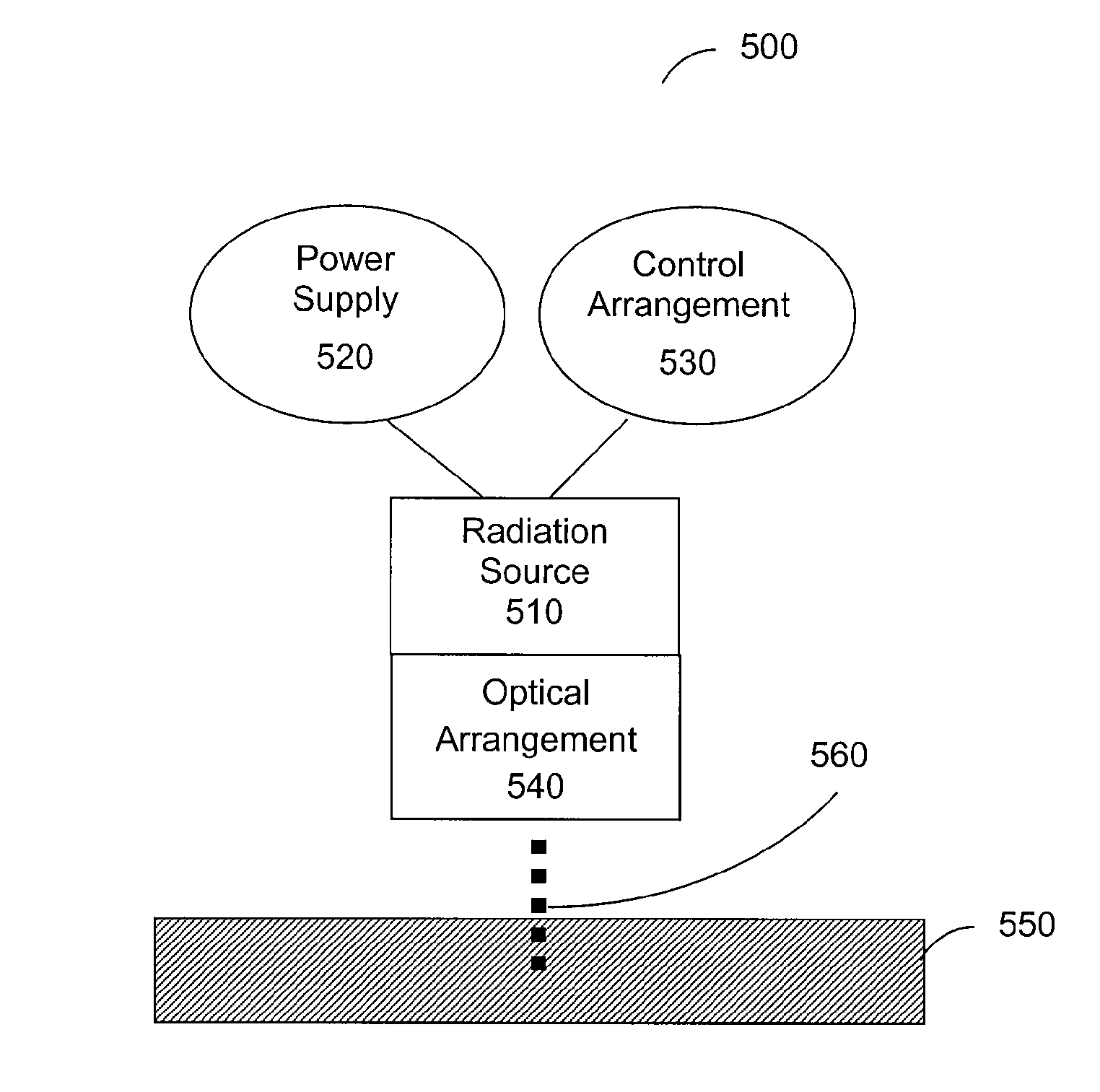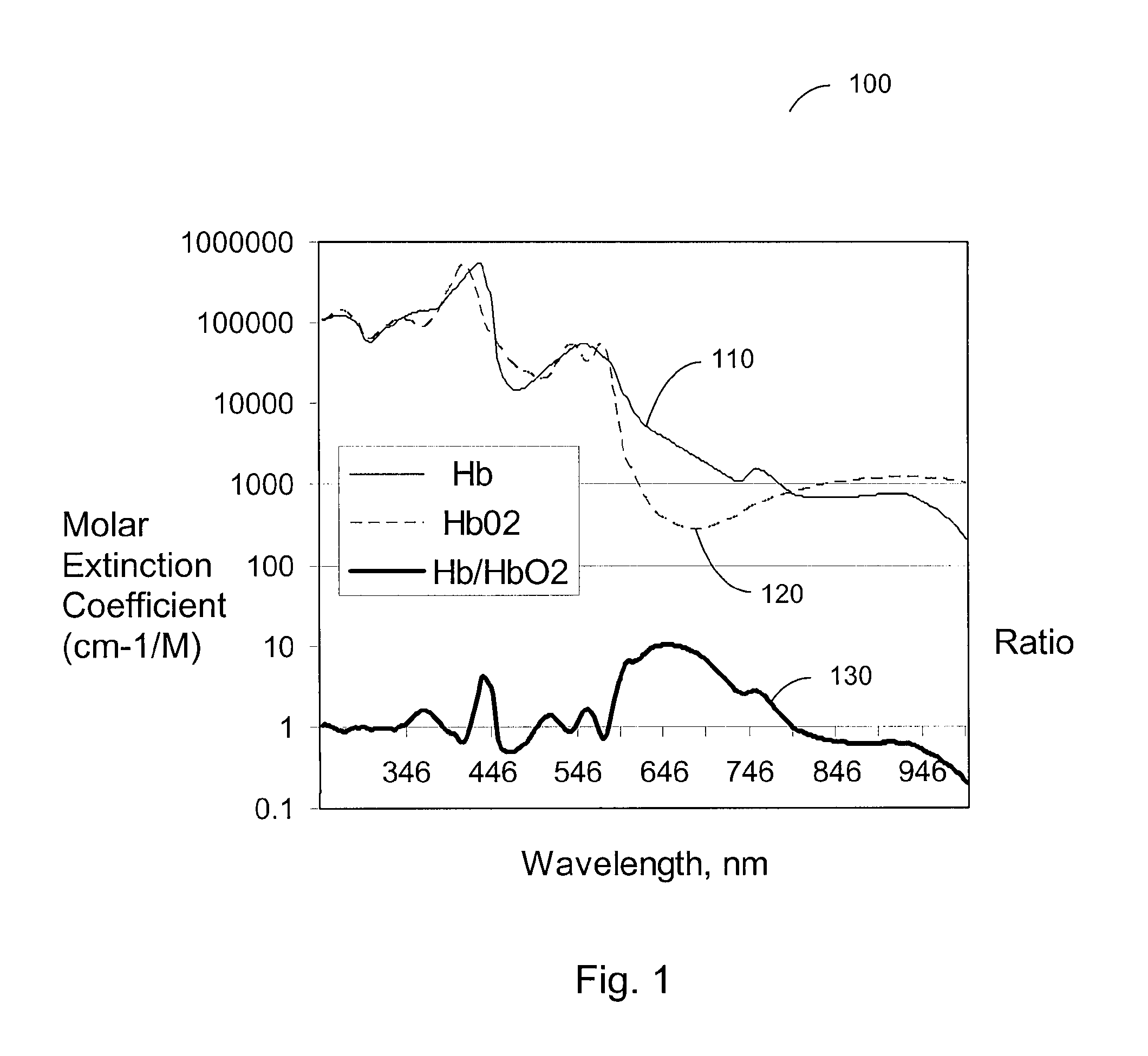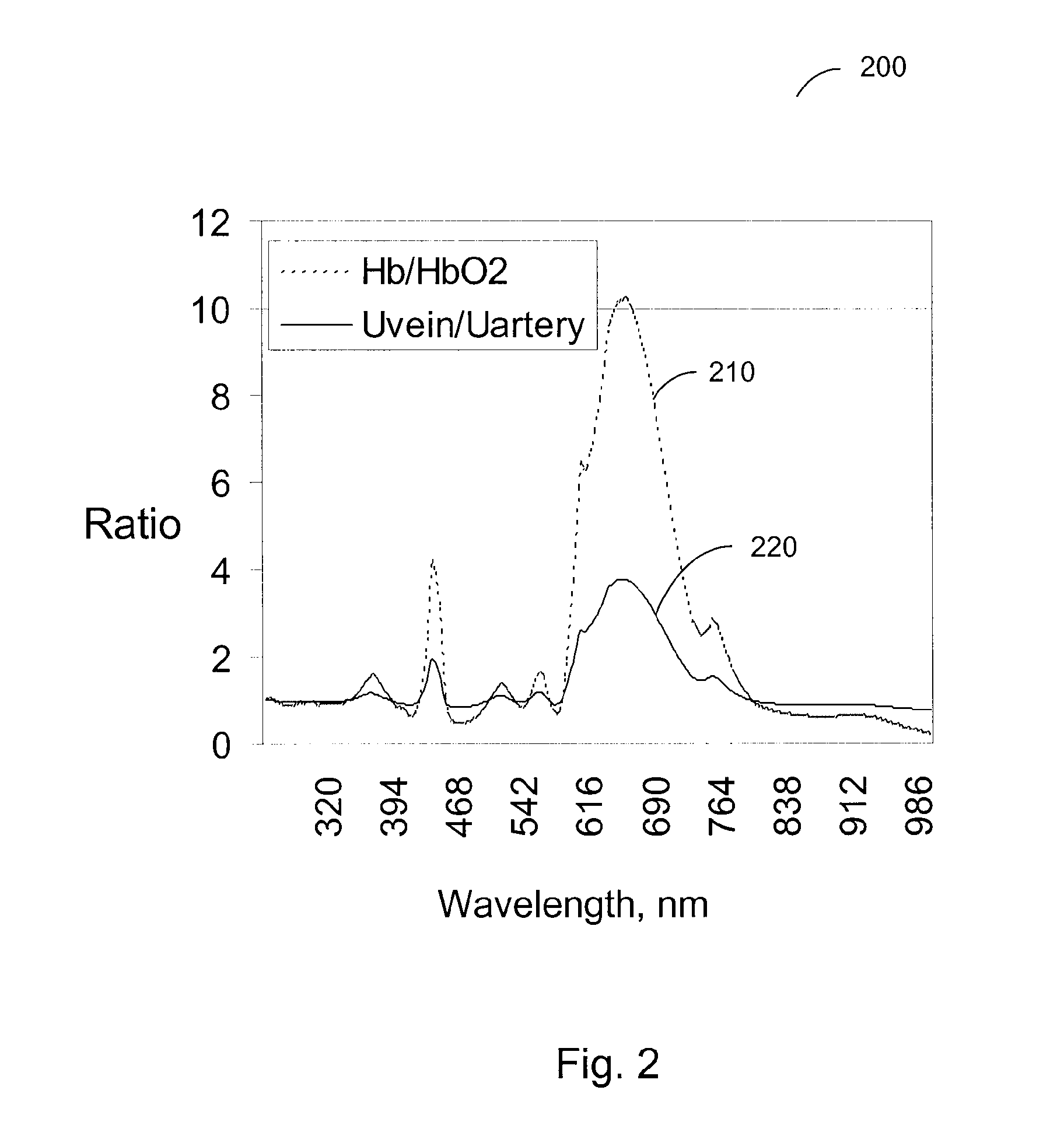Method and apparatus for selective photothermolysis of veins
a vein and selective technology, applied in the field of vein selective photocoagulation, can solve the problems of affecting the health of patients, affecting the treatment effect, so as to facilitate the relative sparing of veins
- Summary
- Abstract
- Description
- Claims
- Application Information
AI Technical Summary
Benefits of technology
Problems solved by technology
Method used
Image
Examples
Embodiment Construction
[0014]Exemplary embodiments of the present disclosure are directed to methods and apparati that can provide selective photothermolysis of venous lesions using, e.g., a laser, IPL source, or other source of electromagnetic radiation which can facilitate a relative sparing of arteries.
[0015]In one exemplary embodiment, a method can be provided for applying a particular electromagnetic radiation to a biological tissue, such as skin. Characteristics of the radiation can be selected such that the radiation can be selectively absorbed, e.g., by one or more veins or venous structures present in the tissue as compared with arteries that may be present therein. For example, the optical radiation can include one or more wavelengths between about 685 nm and about 705 nm, or between about 690 nm and about 700 nm, or a wavelength of about 694 nm. The radiation can be provided by, e.g., a pulsed dye laser, a ruby laser, or another type of laser. A filtered intense pulsed light source can also be ...
PUM
 Login to View More
Login to View More Abstract
Description
Claims
Application Information
 Login to View More
Login to View More - R&D
- Intellectual Property
- Life Sciences
- Materials
- Tech Scout
- Unparalleled Data Quality
- Higher Quality Content
- 60% Fewer Hallucinations
Browse by: Latest US Patents, China's latest patents, Technical Efficacy Thesaurus, Application Domain, Technology Topic, Popular Technical Reports.
© 2025 PatSnap. All rights reserved.Legal|Privacy policy|Modern Slavery Act Transparency Statement|Sitemap|About US| Contact US: help@patsnap.com



